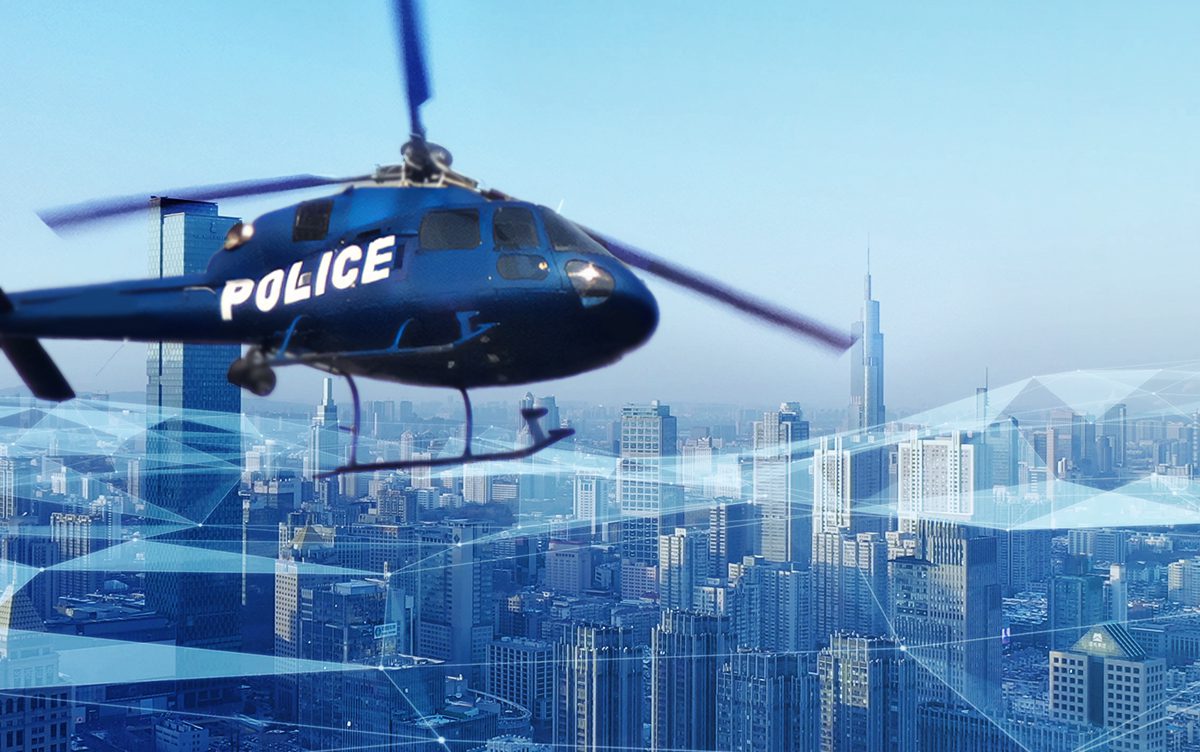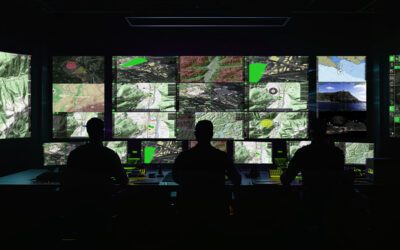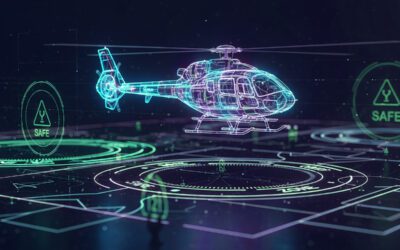One of the biggest areas where law enforcement has evolved is in the use of police augmented reality operations. Mixed reality enhances and supports human officers in everything from surveillance and crowd control to augmented reality police training and data analysis. In particular, the application of AR in operational situations has been especially successful in airborne platforms.
In this article, we’ll examine how augmented reality police equipment is becoming essential to modern law enforcement, especially for airborne platforms. We’ll explore both the benefits and current drawbacks of AR and how the sector may develop in the coming years. We’ll also look at AR’s role in training and skills development and the different ways law enforcement can benefit from using mixed reality in daily operational planning and procedures.
Keep reading to discover how FlySight’s market-leading OPENSIGHT turnkey solutions and AR applications are reshaping the face of modern law enforcement.
What is Augmented Reality?
Before we examine the role of AR and mixed reality in policing, let’s first determine what we mean by Augmented Reality.
AR and mixed reality combine computer-generated content with the real world. They can involve a range of sensory experiences, but they are primarily auditory and visual.
Mixed reality combines three basic features to create an intense and wide-ranging 3D experience. We have already mentioned that the root of AR is a combination of real and virtual worlds, but equally important is the ability to interact with the AR system in real time and the manufacture of precise, accurate 3D renditions of both virtual and real objects.
It is important to note that there is a very clear distinction between AR and VR here. VR or virtual reality tends to rely on completely immersive technology that detaches the user from the real world (such as VR headsets). Mixed reality is used in conjunction with the real world, not instead of it, which means AR currently has more practical applications in everyday use than VR.
How is augmented reality being used in policing?
The use of augmented reality (as well as AI for data analysis) is being applied to fingerprinting and suspect identification. Rather than taking days or even weeks to identify evidence such as fingerprints at crime scenes, the job can be done in a far shorter period, speeding up the investigation.
In China, augmented reality glasses combined with facial recognition software can help patrol officers immediately identify suspects on the street. This is a revival of the smart glasses concept first promoted by Google and others some years ago, but with a far more advanced system and the latest electronics, meaning these glasses actually work! The glasses give officers access to national databases in real-time at checkpoints.
In the US, the FBI, in association with other agencies, has investigated the use of mixed reality in many different scenarios. These range from giving police and law enforcement officers a translation tool that works in real-time (essential in a country where a huge range of languages are spoken) to using facial, voiceprint, and other biometric recognition data to speed up identification.
US law enforcement agencies are invested in using mixed reality for SWAT operations, which gives them greater tactical advantages before entering a potentially hostile situation.
They are also considering using augmented reality to create scalable, 3D maps that overlay everything from building floor plans to public utility information and transport routes to enhance situational awareness.
This last point is possibly the most practical application of police augmented reality systems, as it is the very definition of AR – a combination of the real and the virtual world. Mixed reality in this form is becoming the norm for mobile platforms, particularly aerial units such as helicopters. Using overlaid maps and 3D information gives airborne operators a far more detailed perspective of the ground. The fact that this type of mixed reality can be easily grandfathered over for use on existing hardware also makes it practical and easy to adopt.
Augmented reality police training
Augmented reality also has a role to play in police training. In the US, crime scene scenarios are being created using both AR and VR to train new officers on the best way to analyse a crime scene. In New York, police are being trained to de-escalate volatile situations or hostage situations using mixed reality. At the same time, the FBI notes in a recent report that augmented reality can create realistic training scenarios for dangerous situations without putting trainees at risk.
Augmented reality already plays a key role in pilot training, particularly for emergency service operators involved in everything from search and rescue to crowd control, traffic monitoring, and surveillance. To that end, solutions such as FlySight’s OPENSIGHT are a huge advantage to policing and represent the cutting edge of augmented reality to create an optimal situational awareness during law enforcement training and operations.
OPENSIGHT – using augmented reality for pilot training
Using mixed reality in helicopter cockpits and linked to operations on the ground enables pilots and crews to assess and respond to situations much faster and more accurately. OPENSIGHT produces mission console software technology that can be easily incorporated into aerial platforms such as helicopters to produce accurate, 3D-rendered mapping with multiple layers of information on top of one another. Combining this with AI to sift through the ‘background noise’ and focus on key elements (such as a mobile suspect vehicle) makes operations more efficient.
Not only OPENSIGHT included the next generation of mixed reality feature, but it also represents a transition to enhanced reality where aerial law enforcement units can make every second in the air count. These turnkey solutions can be seamlessly integrated into existing legacy systems using equipment that operators are already familiar with. Training time is reduced, making the OPENSIGHT system operational more quickly.
OPENSIGHT-enhanced reality can be used in a wide variety of scenarios, from SAR operations to crowd and critical event surveillance, traffic management, and special operations. The ability to coordinate aerial and ground operations means a more efficient use of resources and manpower.
As mixed reality technology advances, solutions such as OPENSIGHT will become not just a standard part of operational procedures but an integral component. The human element will always be the other side of this particular coin, balancing and controlling the use of augmented reality. Regardless of the future, augmented reality and police operations will be intrinsically linked, providing a better and more efficient service for the public.
To learn more about OPENSIGHT and its use in law enforcement, TFO training, and mission-critical systems, browse our videos and resources section online. You can also contact us in confidence today to discuss how FlySight’s AR solutions for police and OPENSIGHT law enforcement teams could work for you.




